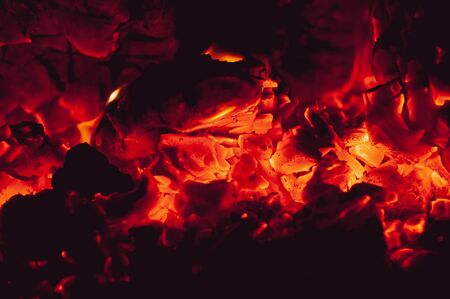1. Choosing the Right Spot
When it comes to building a campfire in the British countryside, selecting the proper location is both an art and a responsibility. You’re not just looking for a patch of ground; you’re making a choice that reflects respect for local wildlife, fellow ramblers, and the time-honoured Countryside Code. Always seek out established fire rings or designated campfire sites where possible—these are often found at managed campsites or wild camping areas that permit fires. Avoid lighting up near dry grass, peat, or overhanging branches, as these can quickly turn your warming ritual into a hazard. The golden rule in Britain is: if in doubt, don’t light. Make sure your chosen spot is well away from footpaths and bridleways so as not to inconvenience walkers or riders passing through. Before striking a match, scan the ground for signs of animal burrows or nesting birds—disturbing local fauna is both inconsiderate and could land you in hot water with landowners or wardens. Stick to open areas on mineral soil wherever possible, and never build a fire directly against drystone walls or under hedgerows. Remember, every decision made around your campfire echoes the British ethos of leaving no trace: keep it discreet, lawful, and always ready to douse at a moment’s notice.
2. Building a Traditional British Campfire
Constructing a safe and efficient campfire is an essential skill for any British camper, blending time-honoured tradition with modern safety standards. Below is a step-by-step guide, tailored to the UK’s unique environment and resources, ensuring both warmth and environmental stewardship.
Step-by-Step Guide: Constructing Your Campfire
- Choose Your Location Wisely: Select a clear, flat area away from overhanging branches, dry grass, or tents. In established sites, always use designated fire pits.
- Prepare the Ground: If permitted, lay down a fire grate or construct a ring of large stones to contain your fire. This minimises ground scorch and preserves the countryside for future campers.
- Select Classic British Fuels:
| Fuel Type | Benefits | Notes |
|---|---|---|
| Seasoned Hardwood (Oak, Ash, Beech) | Burns hotter & longer Less smoke |
Sourced from local woodlands or purchased logs; avoid collecting live wood |
| Kiln-Dried Logs | Easy ignition Consistent burn |
Often available at campsites or petrol stations |
| Natural Kindling (Twigs, Pine Cones) | Quick start Traditional touch |
Gather fallen twigs only; never strip trees |
| Eco Firelighters (Waxed Wool, Cardboard) | No chemical odour Eco-friendly |
Avoid using plastics or litter as starters |
- Lay Your Fire: Use the classic “teepee” or “log cabin” structure. Start with kindling at the centre, building outwards with larger pieces of hardwood. Ensure good airflow between logs for an efficient burn.
- Ignite Safely: Light your kindling using matches or a flint striker—both quintessentially British choices. Never use petrol or accelerants.
- Tend and Maintain: Feed the fire gradually, avoiding overloading which leads to excessive smoke and wasted fuel. Always keep water or sand nearby in case you need to extinguish quickly.
- Minimise Impact: Once finished, douse thoroughly and scatter cold ashes. Restore the site so it’s as inviting for the next rambler as you found it.
The British Way: Respect and Resourcefulness
A traditional British campfire is more than just warmth—it’s about respect for nature and those who’ll camp after you. By following these steps and choosing sustainable fuels, you ensure both efficiency and harmony with Britain’s cherished landscapes.

3. Weathering the Elements the British Way
If there’s one thing you can rely on in the British outdoors, it’s that the weather will keep you on your toes. Rain, drizzle, and wind are all part of the adventure. To start and maintain a campfire in such conditions, you’ll need more than just optimism—you’ll need grit, know-how, and some old-fashioned British ingenuity.
Windbreaks: Shielding Your Flames
The relentless British breeze can turn a simple fire into a smoky struggle. Start by scouting your site for natural shelter—dense hedgerows or the lee of a sturdy stone wall are prime spots. If nature isn’t obliging, construct a makeshift windbreak from rucksacks, tarps, or a semi-circle of large rocks. Remember to leave enough space for airflow; too tight and you’ll smother the flames, too open and the wind will whip them away.
Kindling: The Foundation of Fire
Damp wood is every camper’s nemesis. In Britain’s often sodden landscapes, carry your own dry kindling—think waxed cotton wool, dryer lint in an old film canister, or trusty firelighters from any village shop. Dead twigs found off the ground under pine trees are usually driest. Feather sticks—thin shavings carved with your knife—catch easily even when the weather refuses to cooperate.
Moisture Control: Keeping Dry Against All Odds
The key to efficient fire-starting is keeping everything as dry as possible. Stash your tinder and matches in waterproof containers (an empty tea tin does nicely). Lay a bed of bark or stones to lift your fire off wet earth. Once lit, feed the fire slowly with slightly thicker sticks—patience is a virtue when dealing with moisture-laden wood. Above all, resist the urge to pile on logs; let the heart of your fire build gradually until it’s robust enough to handle bigger fuel.
Pro Tip: Embrace Local Resources
Don’t overlook classic British resources: dry gorse branches crackle beautifully, and even a bit of newspaper from your fish and chips can help coax stubborn flames to life. When conditions are tough, adapt—improvisation is at the heart of surviving (and thriving) in the unpredictable British wilds.
4. Campfire Safety Essentials
When it comes to campfire safety in the UK, a blend of legal requirements and traditional countryside etiquette sets the standard. Understanding these essentials is not just about avoiding fines—its about protecting the landscape and respecting local communities. Below, youll find key safety practices every wild camper or hiker should follow when enjoying a fire outdoors in Britain.
Fire Size Limitations
UK law and rural custom both emphasise keeping fires small and manageable. Large bonfires are rarely tolerated outside organised events. The table below outlines general guidelines:
| Setting | Recommended Fire Size | Legal/Customary Note |
|---|---|---|
| Campsite (with permission) | No larger than 0.5m diameter | Follow site rules; some ban fires entirely |
| Wild camping (England & Wales) | Avoid unless landowner agrees | Trespass law applies; open fires discouraged on access land |
| Scottish Outdoor Access | Small, controlled (leave no trace) | Permitted under Scottish Outdoor Access Code with strict care |
Extinguishing Procedures
The British climate may be damp, but moorlands and forests can still catch alight. Always fully extinguish your fire before leaving or sleeping:
- Douse thoroughly with water—never simply smother with soil.
- Stir embers and repeat until all heat is gone.
- If water is scarce, use wet earth sparingly and ensure no smoke or steam rises.
- Dispose of ashes far from vegetation and never bury hot coals—they can smoulder unseen.
Local Authority Guidelines
Many regions have explicit rules regarding open fires, especially during dry spells or in protected areas like National Parks. Always check for:
- Fire bans: Temporary restrictions during droughts or high winds.
- Designated fire pits: Use only where provided, never create new ones.
- Litter and ash disposal: Leave no trace—pack out all non-biodegradable waste.
- Liaison with rangers or landowners: When in doubt, ask before lighting up.
Your Legal Responsibility
If your campfire causes damage, you can be held criminally liable under UK law. Fines, court action, or even imprisonment await those who ignore fire regulations. Rural Britain values its landscapes—show respect by following both the letter of the law and the spirit of local custom.
5. Etiquette and Environmental Respect
When it comes to campfire safety and efficiency in the UK, observing proper etiquette is just as important as mastering firecraft. British campsites often have a strong sense of community, and your actions around the fire can leave a lasting impression—good or bad.
Cultural Dos and Don’ts
Respecting Quiet Hours
Many British campsites enforce quiet hours, typically from 10pm onwards. Loud conversations, music, or raucous laughter around the fire after this time are considered poor form. If you need to keep the fire going late, do so quietly and keep voices low. Remember: a peaceful environment is part of the outdoor experience for everyone.
Litter Management
The British countryside is fiercely protected by both law and tradition. Always bring a rubbish bag and take all litter with you—this includes food scraps, burnt foil, and cigarette butts. Never bury waste in the ground, as animals may dig it up and it spoils the landscape for others.
Respecting Fellow Campers
Position your campfire downwind from neighbours where possible, and avoid smoke drifting into other tents or caravans. If you’re joining a communal fire, ask before adding wood or rearranging logs—this shows respect for those who started it. Avoid burning materials that create excessive smoke or unpleasant odours; stick to seasoned wood or approved fuel.
The Bottom Line
Good manners round the campfire go hand-in-hand with environmental stewardship. By keeping noise down, managing litter responsibly, and showing courtesy to fellow campers, you uphold cherished British outdoor values—and ensure your own welcome at any site from Cornwall to the Highlands.
6. Warming Up—The British Experience
The true spirit of a British campfire lies not only in its crackling warmth but in the traditions that surround it.
Brewing a Proper Cuppa
Nothing says ‘British’ quite like a cup of tea, even in the wild. Bring a sturdy kettle and fill it with fresh water. Let your fire burn down to glowing embers—this provides steady, reliable heat without risking your brew or your fingers. Pop your kettle on, wait for the rolling boil, then steep your favourite blend. For added authenticity, offer milk and sugar, and always mind the teabags—no one wants to fish those out of the fire.
Sharing Stories Round the Fire
Campfires are perfect for a bit of good-natured storytelling. Whether you’re recounting ghostly legends from Dartmoor or swapping tales of countryside escapades, keep it light-hearted but respectful of your company and surroundings. A well-told story brings people together and keeps spirits high when the night air turns brisk.
Making the Most of the British Outdoors
The unpredictable British weather means preparation is key. Layer up with wool or fleece, bring waterproofs just in case, and sit close to the fire’s warmth—but never so close as to risk safety. Use windbreaks if necessary, and always have a dry log pile handy to keep the blaze alive. Remember: leave no trace behind except memories and laughter.
Staying Cosy While Staying Safe
As you settle in for an evening under the stars, prioritise comfort without compromising safety. Keep blankets off open flames, ensure seating is stable, and don’t forget to check on each other—especially as temperatures drop. The real efficiency comes from blending time-honoured customs with common sense: a roaring fire, a mug of tea, hearty conversation, and respect for nature—that’s warming up the British way.

